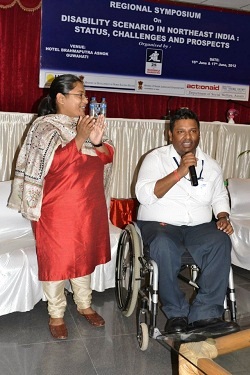BHASKAR PHUKAN, BUREAUCRAT:
Do you think reopening of the Stillwell road at Ledo, Margherita which goes right up to the Yunnan province put into practice the stated objectives of the Look East Policy? Are there any strategic constraints given the String of Pearls encirclement of the Chinese dragon in the region?
Sudeep Chakravarti: Dear Mr Phukan, on the face of it any link with another geography is a good thing — and this day and age of greater geo-economic interaction and interdependence, roads as the historic one you mention can only be to the greater good. I imagine that, from the Government of India’s perspective, reopening of the old Stilwell Road is certainly another step toward its stated Look East Policy.
My take is that China will not have any problem with such enterprise. Indeed, modern China has historically welcomed access to other regions within its own boundaries and those beyond its boundaries because it plays well into its own blueprint of outreach, reach and influence. As with a ceremonial welcoming of the opening up of a communication and trade route between India and China in Sikkim, China will surely welcome the full functionality of the Stilwell Road from Ledo via Myanmar to Kunming.
There have been fears in some sections of Indian opinion—especially the defence establishment—that opening up of this road would make India vulnerable to possible Chinese attack. My view is that those who fear so should get their act together instead of carping about dangers. For instance, India is unable to even prevent regular Chinese army adventures across the Line of Actual Control. Our defence establishment complains about China building roads in Tibet close to our borders—seeing that as a security threat—but will do little or nothing to upgrade our own infrastructure. There is even a ludicrous belief that keeping communications primitive on our side of the border will in some way hinder a possible Chinese onslaught! Those who feel that way should consider that Chinese troops were on the northern shores of the Brahmaputra in 1962, when our road network and infrastructure and preparedness was far more primitive than at present. If this is the thinking of some among the top echelons of India’s defence establishment—armed and civil—then I pity us.
As to those who say a fully functional Stilwell Road will lead to a deluge of cheap Chinese imports—yes it might. But our markets, in so-called Mainland India and so-called Northeast India are already deluged by Chinese goods, and through no fault of the Chinese. Chinese goods have won over markets because they are cheaper—and sometimes, better. Here I will maintain that ‘dumping’ needs to be differentiated from ‘imports’. Over time dumping is an inefficient form of economic push, as it operates on the assumption of short-term loss for longer-term gain. Chinese imports are popular because they deliver better on needs and wants. We may need to keep that in mind when we next buy blankets, saris, LED lamps (because India has massive deficiencies in electricity, not because we love Chinese LED lamps) and even holi colours made in China. And I am writing this on a laptop made by Lenovo, which is a Chinese company.
Besides, one must not discount a future in which agricultural produce and other goods from India could make their way up to China using the Stilwell Road. Mutual tourism will benefit as well. And, were we to upgrade our defence insfrastructure and preparedness, then who is to say China won't be concerned at India's movements along the Stilwell Road?
As to China’s String of Pearls strategy: it’s there, and we simply have to deal with it. Only in these past decade or so have we seem to have developed the institutional intellect and financial appropriation to try and counter—certainly not match—China’s stated push to be present at places it feels it needs to be. So it has established claim and bases in the Spratlys; established bases of logistics and operation in Myanmar (we only have a recently reorganized base nearby in the Andamans); massive strategic investment in Sri Lanka including a port in the south, at Hambantota, while India has frittered away nearly every advantage in Lanka; a calculated relationship with Pakistan that over and above deep military and geopolitical links, now provides China a port facility at Gwadar. Diligently, seamlessly, China has built a string of support systems—that also seeks to protect its oil imports—that spans the Bay of Bengal, Indian Ocean, the Arabian Sea and Persian Gulf. China has also made a great leap ahead in engaging Africa, and we’re laggards there.
Why blame China?
And we worry about the strategic implication of the Stilwell Road instead of fixing our own inefficiencies, ambitions and delivery of those ambitions—including those in Northeast India and with the so-called Look East Policy! If this one road through Myanmar is going to ruin the integrity of the Republic of India, then we might as well capitulate to China right away and save everybody the trouble!
(If you have questions for Sudeep Chakravarti, mail them to editor.ttpmag@gmail.com)
Also read:







































